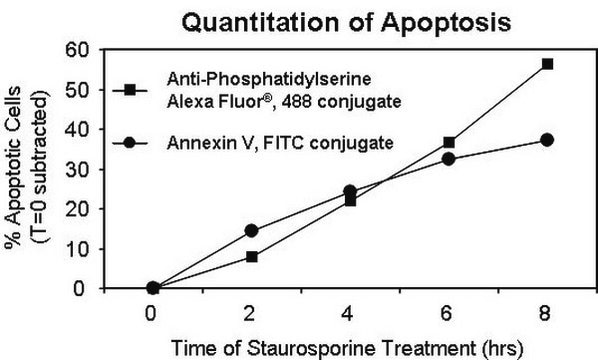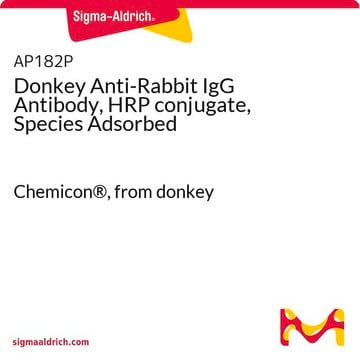05-719
Anti-Phosphatidylserine Antibody, clone 1H6
clone 1H6, Upstate®, from mouse
Synonym(s):
Anti-Phosphatidylserine, Clone 1H6 Anti-Phosphatidylserine, Phosphatidylserine Detection
About This Item
Recommended Products
biological source
mouse
Quality Level
antibody form
purified immunoglobulin
antibody product type
primary antibodies
clone
1H6, monoclonal
species reactivity
vertebrates
manufacturer/tradename
Upstate®
technique(s)
flow cytometry: suitable
immunohistochemistry: suitable
isotype
IgG
shipped in
dry ice
target post-translational modification
phosphorylation (pSer)
Gene Information
human ... PTDSS1(9791)
General description
Anti-Phosphatidylserine may be used to detect translocation of the membrane phospholipid phosphatidylserine (PS) from the inner to the outer cell membrane leaflet; it provides an alternative to Annexin V for quantitation of apoptosis.
Specificity
Immunogen
Application
Immunohistochemistry: This antibody has been reported by an independent laboratory to detect phosphatidylserine in rat carotid artery paraffin sections fixed with ethanol/acetone (Mandinov, L., 2003).
Apoptosis & Cancer
Apoptosis - Additional
Quality
Target description
Physical form
Storage and Stability
Analysis Note
Brain tissue
Other Notes
Legal Information
Disclaimer
Not finding the right product?
Try our Product Selector Tool.
Storage Class Code
10 - Combustible liquids
WGK
WGK 1
Certificates of Analysis (COA)
Search for Certificates of Analysis (COA) by entering the products Lot/Batch Number. Lot and Batch Numbers can be found on a product’s label following the words ‘Lot’ or ‘Batch’.
Already Own This Product?
Find documentation for the products that you have recently purchased in the Document Library.
Our team of scientists has experience in all areas of research including Life Science, Material Science, Chemical Synthesis, Chromatography, Analytical and many others.
Contact Technical Service






